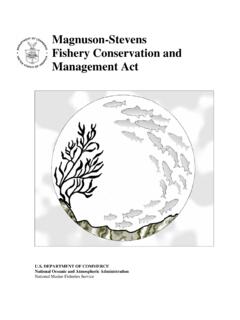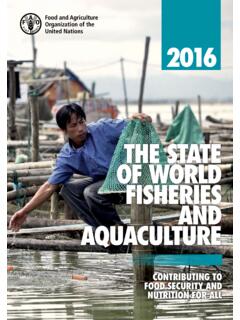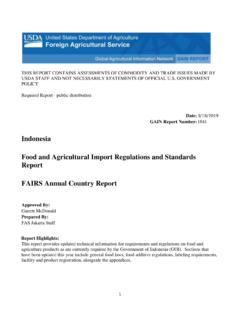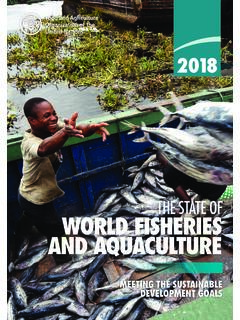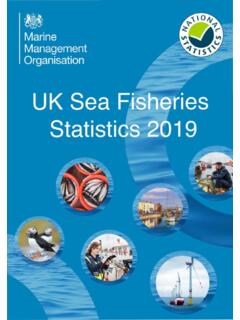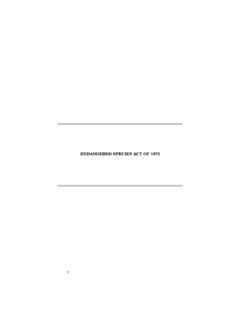Transcription of ANNUAL REPORT 2020
1 ANNUAL REPORT 2020 WELCOME 04 MISSON AND PLANS 06 PROJECT PROGRESS 09 RESEARCH 10 RIVERS 13 OCEAN 16 VALORIZATION 18 MITIGATING RISK 20 STAKEHOLDER MANAGEMENT 23 THE ORGANIZATION 25 FINANCIAL PERFORMANCE AND BUDGET 27 THE PLAN FOR 2021 29A WORD OF THANKS 30 REPORT OF THE SUPERVISORY BOARD 31 FINANCIAL STATEMENTS 34 OTHER INFORMATION 532 TABLE OF CONTENTS HOW TO READ THIS?
2 Management summaryReaders looking for the highlights of 2020 are advised to read from Welcome through to Project Progress . REPORT of the Management TeamThe REPORT of the Management Team consists of the following: Welcome Mitigating Risk Stakeholder Management The Organization Financial Performance and Budget The Plan for 20212 TURNEDTRASH INTO TREASUREWITHTHE OCEAN CLEANUP SUNGLASSESLAUNCHED OCTOBER 24 CLAIMED BY SUPPORTERS AS OF DECEMBER 312020 HIGHLIGHTSINTRODUCED ORGANIZATIONAL DEVELOPMENT PHASESCURRENT STATUSRIVERS VALIDATION PHASEOCEANS DEVELOPMENT PHASEFEASIBILITYDEVELOPMENTVALIDATIONSCA LE UPSTABILITYLAUNCHED THETO TRACKRIVER PLASTICALL OVERTHE WORLDRIVER PLASTIC SURVEY APPGEN 3 INTERCEPTOR DESIGN RELEASEDTHE OCEAN CLEANUP RESEARCHERS TOOK PART IN 8 PEER REVIEWED SCIENTIFIC PUBLICATIONS8 XCOLLECTED KG JUST OVER LBS NORTH SEA TESTS FOR OCEAN SYSTEM 002 ANNOUNCED MANUFACTURING
3 PARTNERSHIP WITH KONECRANES TO SERIES PRODUCE A 1M USD GRANT FROM THE BENIOFF OCEAN INITIATIVE FOR INTERCEPTOR PROJECT IN JAMAICA IS OPERATIONAL IN THE DOMINICAN REPUBLIC004001 + 002 + 004 STRENGTHENED AND EXTENDED PARTNERSHIP WITH MAERSKCREWMEMBERS42% FEMALE | 58% MALEREPRESENTING21 DIFFERENT was the year the world stood still as the effects of COVID-19 wreaked havoc across the globe. As the pandemic permeated the lives and livelihoods of people around the world we shifted our attention, finding ways to curb its detriments. Even faced with these conditions, the mission of The Ocean Cleanup remained as valid as ever, if not more. Single-use plastics, such as masks and medical materials, proliferated.
4 Our cleanup and recycling efforts slowed down, some coming to a complete halt. Despite the challenges, The Ocean Cleanup team persevered and continued working towards our mission. In 2020, we sought to bridge the gap between vision and delivery, learning that sometimes progress can only result when faced with taking a few steps back, before taking a few steps the start of the year, the Ocean team was underway with the System 002 project, incorporating the findings from the System 001/B campaign and preparing for the design phase of this next iteration of our ocean cleanup technology. Although System 001/B did return a first haul of plastic, upon further testing, we learned that this iteration would not permit us to effectively scale up.
5 This understanding led the team to continue adjusting the design. Meanwhile, the Rivers project was forced to slow its momentum substantially due to COVID-19. The Business Development team was severely impacted due to government and local agencies turning their attention to the pandemic. As Interceptor 004 was prepared for installation 4in March in the Dominican Republic, a lockdown forced efforts to come to a standstill. By August, local partners were able to complete the installation, making 004 operational. Interceptor 001 in Indonesia and 002 in Malaysia remained in operation intermittently, but when engineering support was required, repairs and supplies were often delayed due to global travel restrictions and closed production houses.
6 Despite the conditions, the teams moved forward, making significant strides including freezing the design of the Generation Interceptor, and confirming global manufacturing partner, Konecranes, to help streamline and industrialize Interceptor production, installation, and maintenance. With this new manufacturing partner, in Q4, the build commenced on the next two Interceptors. During 2020, the Valorization team made significant progress recycling and repurposing our ocean plastic catch. Using the plastic brought to shore from the System 001/B campaign in the Great Pacific Ocean at the close of 2019, the team started the process of going full circle in our mission: recycling the plastic catch and turning it into a product whose proceeds could help fund continued cleanup.
7 We succeeded in recycling the plastic and turning it into component material used to create our first product made of certified plastic from the Great Pacific Garbage Patch The Ocean Cleanup sunglasses. On October 24, in a socially distanced and entirely digital presentation, Boyan Slat presented the vision behind the product and debuted the addition to members of our Ocean, Rivers, and Valorization (recycling) teams, researchers at The Ocean Cleanup adjusted to the work from home routine as well. Strides were made publishing manuscripts and collaborating with scientists and citizen scientists around the world. In May, the study First evidence of plastic fallout from the North Pacific Garbage Patch was published in Scientific Reports.
8 In other ongoing work, we continued to gather and analyze data from citizen science campaigns focused on mapping the global inputs of ocean waste from fisheries . To round things out, we closed the year with the launch of the River Plastic Survey app which will help us gather additional data points on the waste within our world s rivers. 55 MISSION AND PLANSare carried by a combination of wind and currents and often end up in one of five accumulation zones. These accumulation zones are formed by ocean gyres: vast, circulating currents in the subtropical zones of our oceans which trap debris in their vortexes. The largest gyre forms the Great Pacific Garbage Patch, located midway between Hawaii and California.
9 Once caught in these accumulation zones, plastic can no longer escape; it is there to stay. Every single piece of plastic that persists is dangerous the longer it remains, the more hazardous it becomes. As a patch accumulates and increases in volume, it can cause entanglement and/or choking risks to marine life. Also, when plastic fragments into smaller (micro)plastics, it further impacts the safety of marine life and the food chain including our Ocean Cleanup develops advanced technologies to rid the oceans of plastic. Our purpose is to drive the largest ocean cleanup in history by stemming the inflow of floating plastics via rivers, and cleaning up what has already accumulated in the ocean gyres.
10 As a non-profit foundation (stichting in the Netherlands and 501(c)(3) in the US) we are fully funded by external, mainly private, OF CLEANUPOur research shows that 1,000 rivers account for nearly 80% of riverine plastic pollution flowing into the world s oceans this is a total between million and million metric tonnes per year. Most of the pollution washes back on shore, while some sinks to the seabed near the coast. The buoyant plastics and debris that remain in the ocean 6 Plastic in these patches is widely dispersed, so our solution will follow a cleanup method that first concentrates the plastic to such a level that it can be periodically extracted and returned to shore for recycling. Concentration takes place in a way that mimics how plastic washes ashore in, for example, the Hawaiian archipelago by creating artificial coastlines that corral the plastic transported through the currents of the North Pacific gyre.

